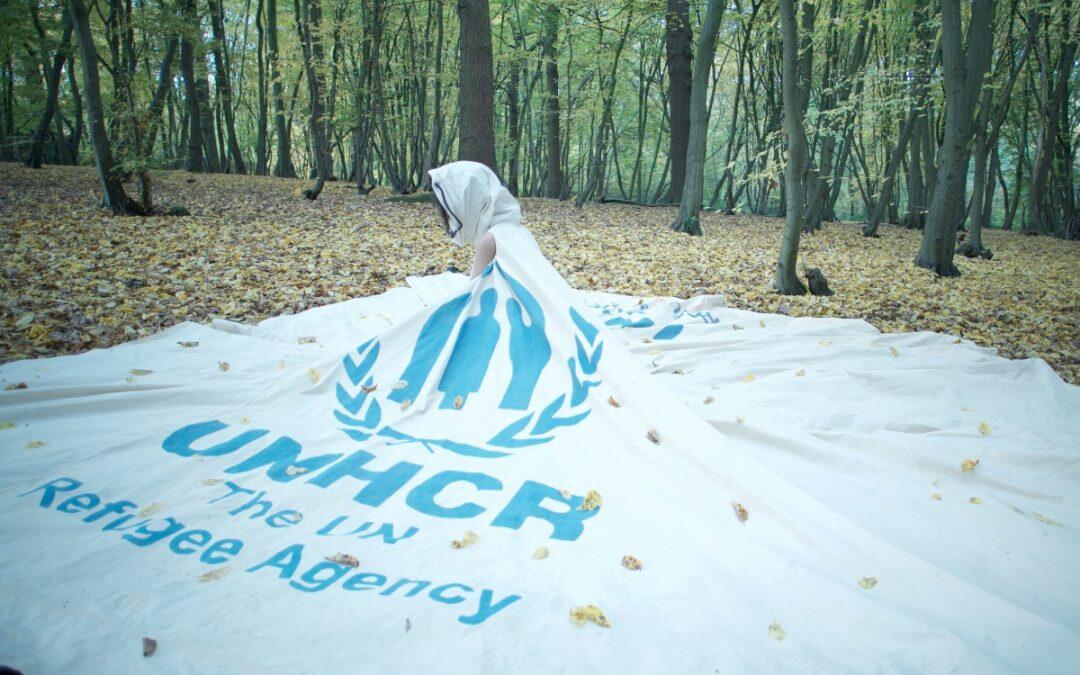With every piece of data out there today, there is – more often than not – a human story behind it. That’s the idea behind Dress For Our Time, an installation unveiled at the Science Museum in London that delves into the global refugee crisis and the complex matter of human displacement in a bid to change the social narrative of the topic.
Created by award-winning artist and designer, Professor Helen Storey MBE RDI, the dress itself is a decommissioned refugee tent that once housed a family in Jordan. It was gifted to the project by the United Nations High Commissioner for Refugees (UNHCR).
Projected onto it is an animation formed of 80,000 individual points of lights, each of which represent 100 human lives and the movements they’ve made around the globe, as per UNHCR statistics collected during 2015. That’s eight million lives in total.
Developed by creative technology agency Holition, the data visualisation aims to show the true human element of the crisis, creatively mapping the journeys people are making in search of a better life.
Indeed, at the opening of the installation, Storey referred to the dress as a “cloth of human purpose”. Through its threads, she explained, it’s able to give life and meaning to otherwise anonymous data. She hopes the project – a combination of science and art – will enable some compassion for a life unknown.
“Worldwide, one in every 113 people on the planet is now either a refugee, internally displaced, or seeking shelter – but numbers means nothing, if they don’t affect your own heart. This project uses the power of fashion to help us connect to the previously unimaginable and asks how each and every one of us can remain a humanitarian in such a time of colossal and irreversible change,” she explains.
The lights on the dress flow from six points to represent the continents refugees have moved from, before populating the countries in which they find shelter. There’s no map of the world projected behind it, yet as the animations consolidate there’s clear recognition as to the places people have headed, and perhaps more poignantly, the negative spaces left behind.
Dress For Our Time first launched at St Pancras International train station in 2015, and at that time used Met Office data to illustrate climate change to coincide with the UN Climate Change conference COP21. It now lives at the Science Museum as part of the Our Lives in Data exhibition.
Source: Forbes
by: Rachel Arthur











